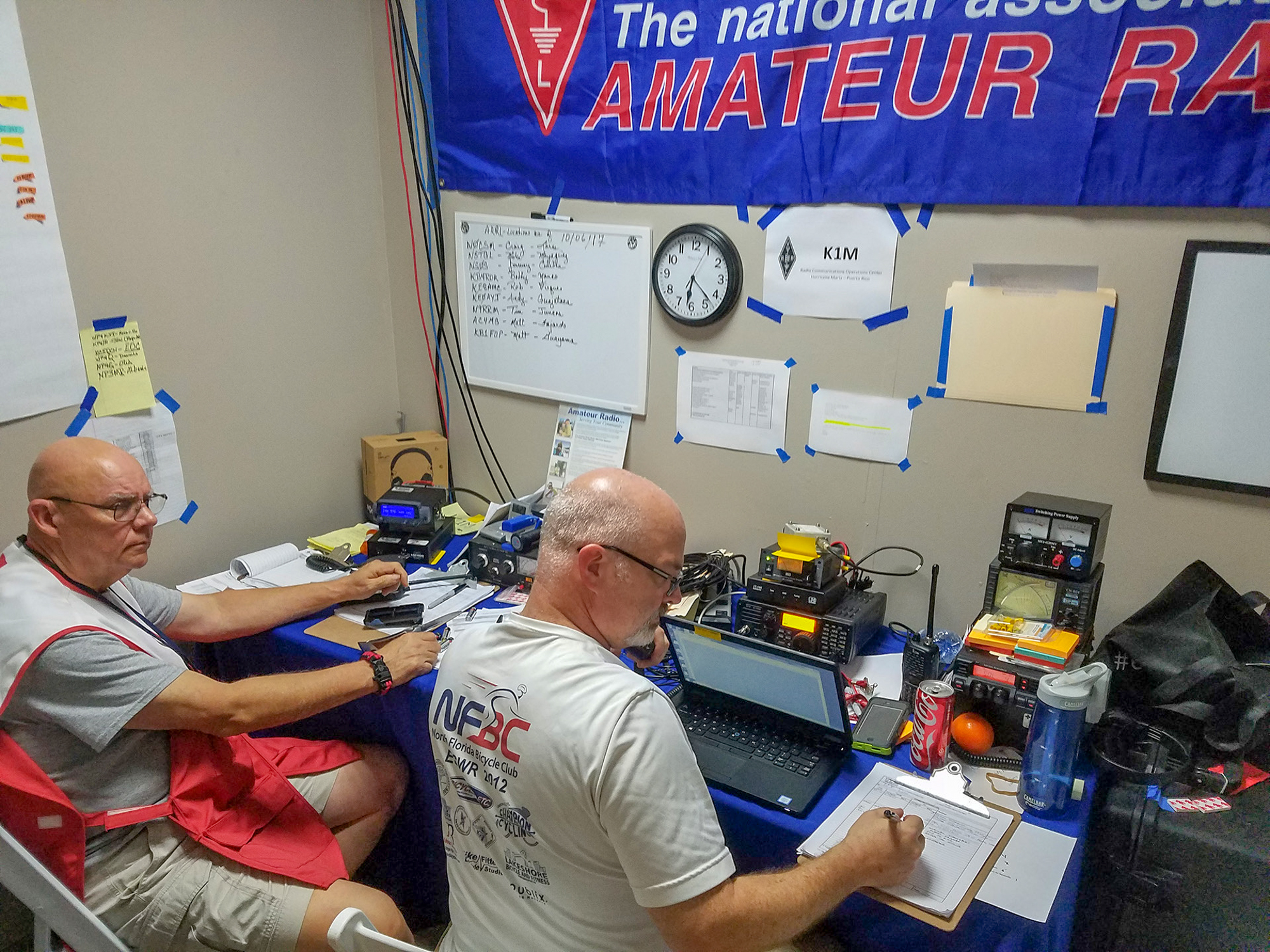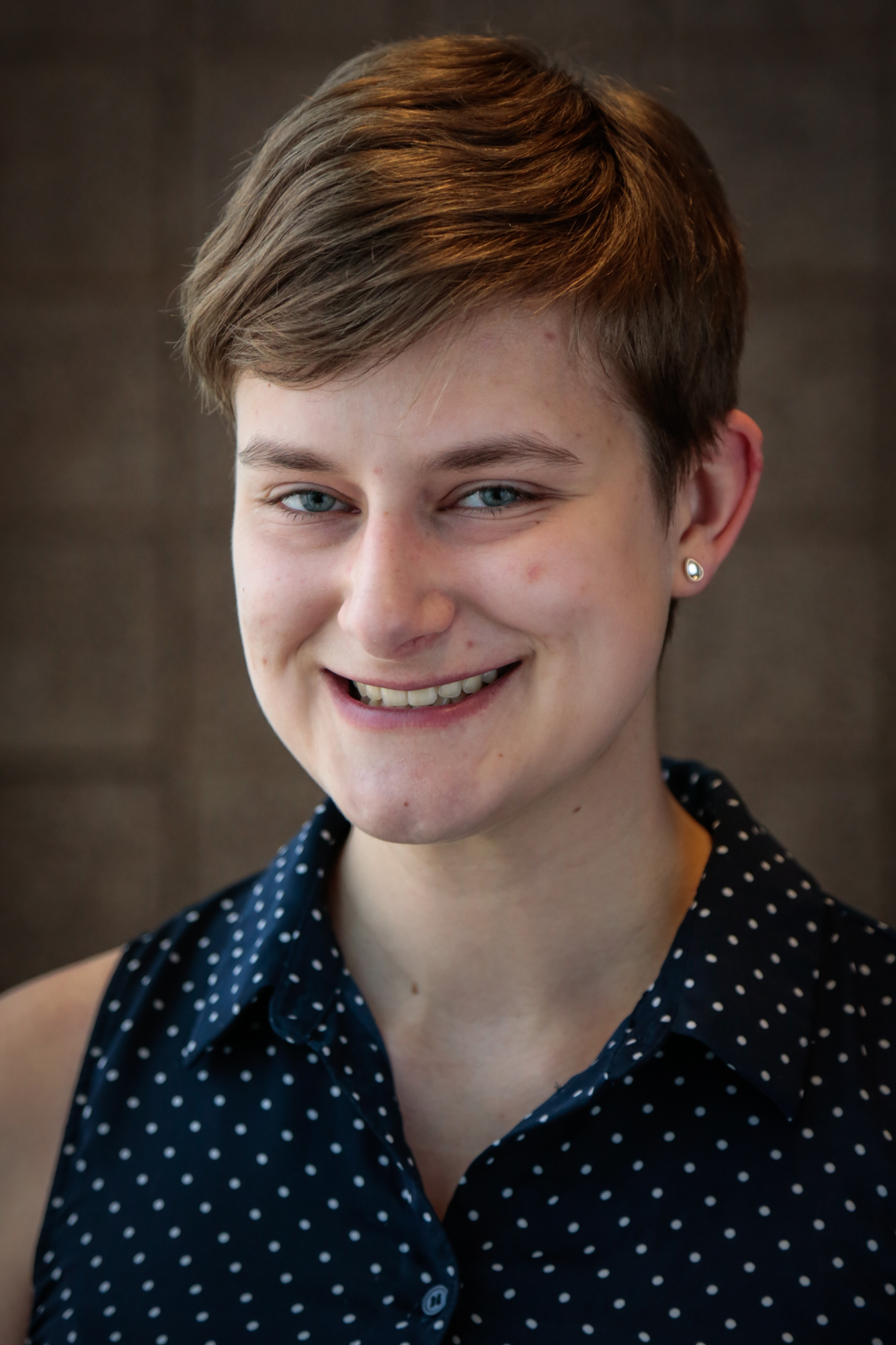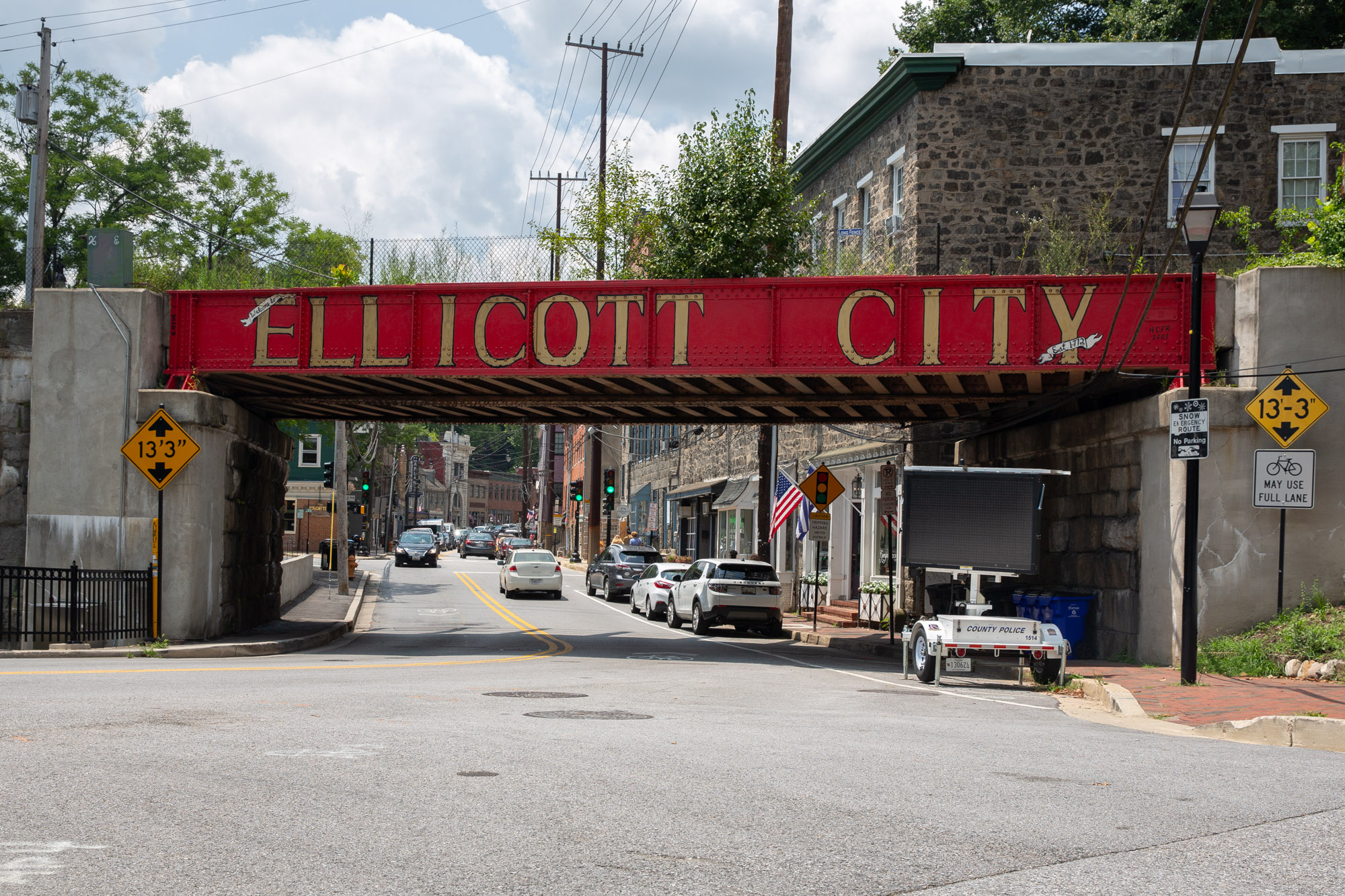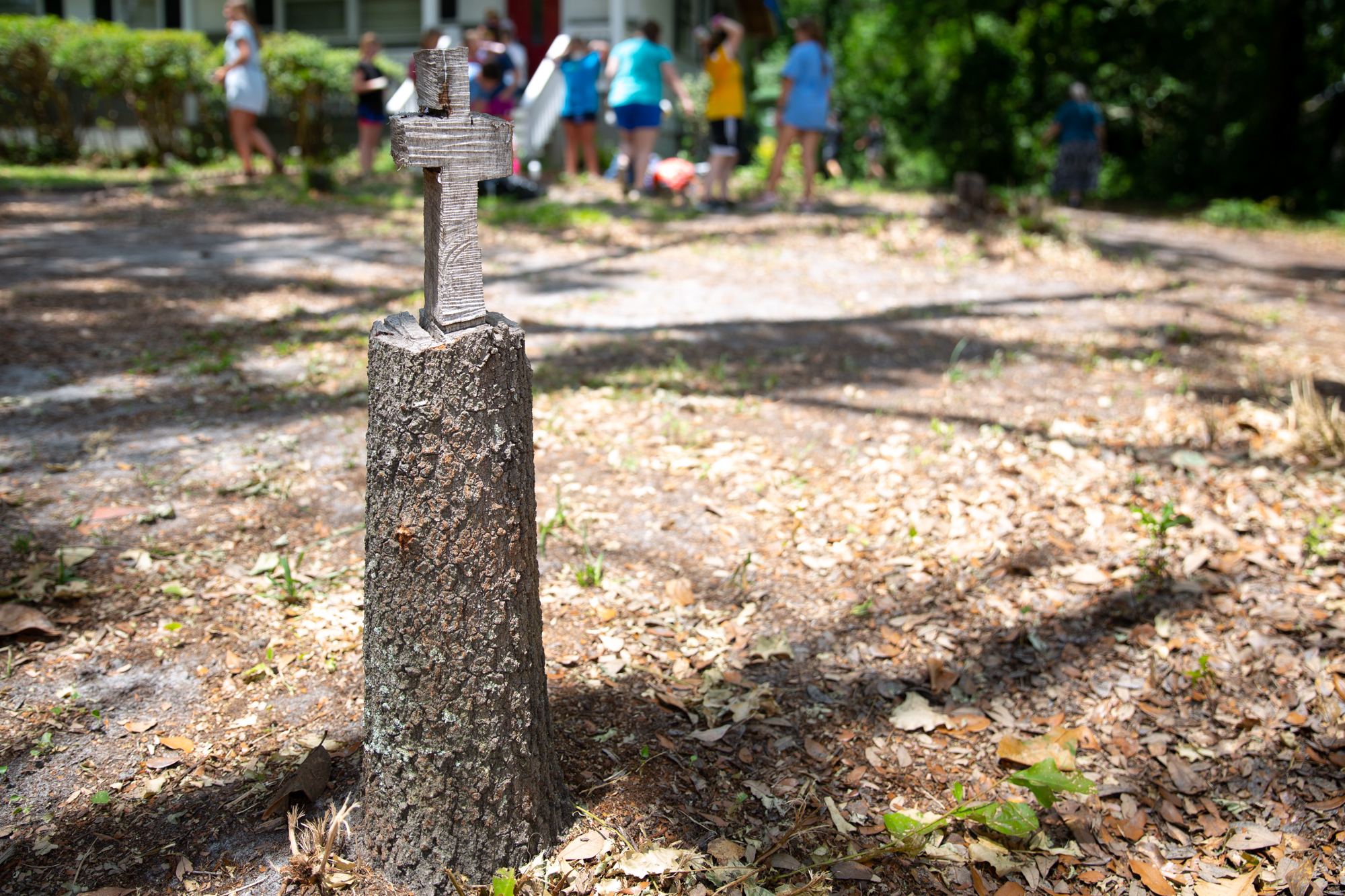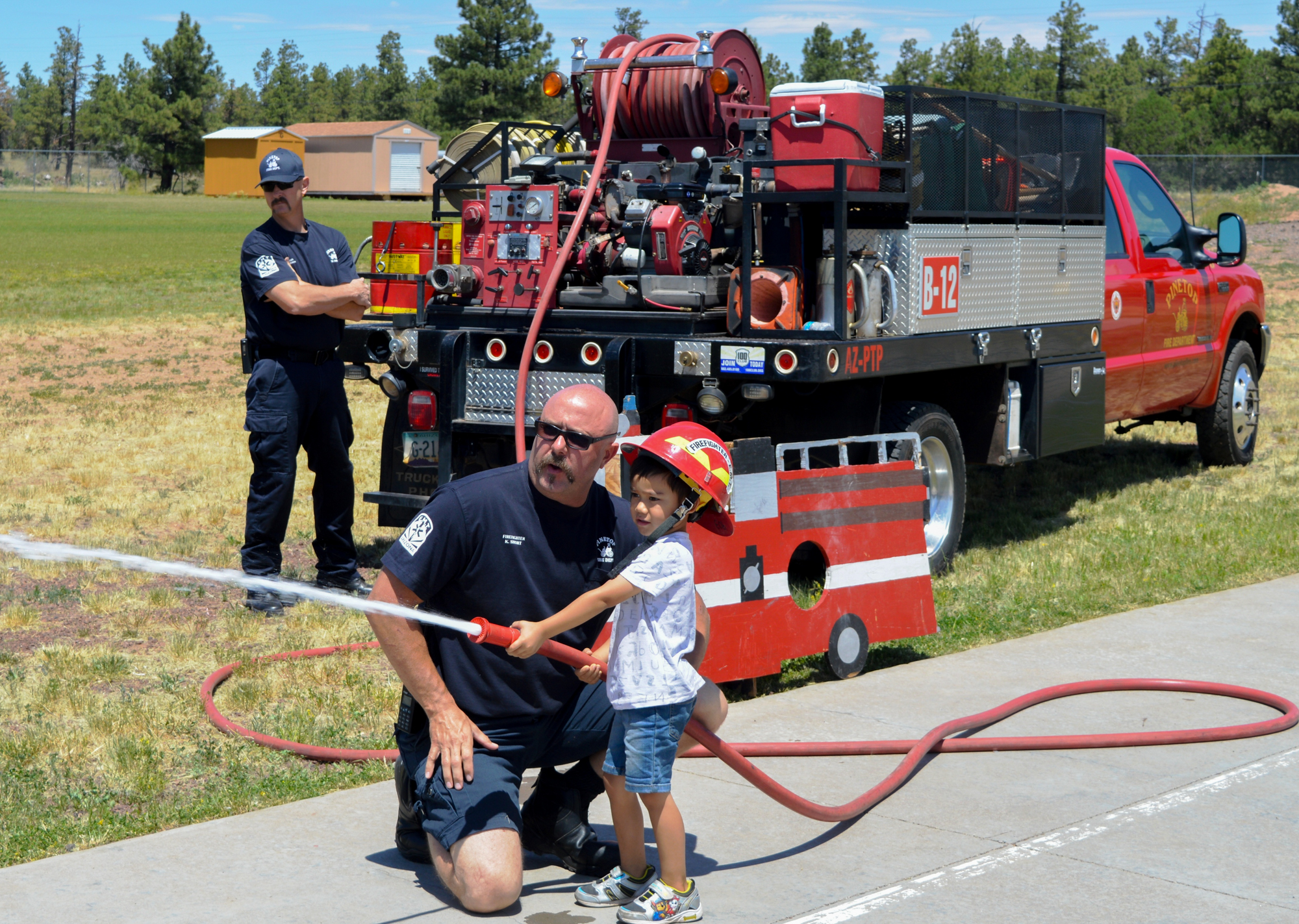The day after Hurricane Michael hit the Florida Panhandle, James Lea, a freelance TV cameraman, was driving through the area for work, listening to the ham radio in his car, when he heard state officials asking for any amateur radio operators in Calhoun County to respond to the city emergency operations center.
Lea is an experienced amateur radio operator but he was tempted not to respond to the call; he needed to work. But he answered the call anyway.
“When I got to the emergency operations center, they had nothing and they weren’t talking to anybody, because all their communications went down,” said Lea. “I realized that I needed to put the camera down and start helping out.”
About 30 hours after the storm made landfall, Lea ended up at a shelter in Wewahitchka whose 200 odd inhabitants hadn’t had any contact with the outside world since the storm hit. Cell service, landlines, internet, and radio towers were all knocked out. Lea stayed and helped relay messages for the shelter. The next day after he woke up, the shelter manager, Donn Minchew, grabbed him by the arm, stared him in the eyes and told him “if you go, we’re in a lot of trouble.”
The storm hit on a Wednesday morning. It wasn’t until Sunday night that a Cell on Wheels was brought in nearby, providing the shelter’s residents with cell service. Until then, Lea and his personal ham radio was the only way they could talk to the outside world.
Craig Fugate, administrator of the Federal Emergency Management Agency from 2009 to 2017, has been a long-time proponent of amateur radio during a disaster and after he retired from FEMA, he joined the Gainesville Amateur Radio Society in Florida. At a Federal Communications Commission forum in 2011 on earthquake communications preparedness, Fugate described amateur radio operators as “the ultimate backup, the originators of what we call social media.”
Later in the same forum, Fugate emphasized that Americans have gotten so reliant on modern communications technology that they never fathom they can fail.
“They do. They have. They will,” Fugate said. “I think a strong Amateur Radio community [needs to be] plugged into these plans.”
Within hours of responding to the EOC, Lea was asked to call for a helicopter to do a medical evacuation: a paramedic had a tonsillar abscess that was septic and the local hospital was out of commission.
“Now he is alive and back at work,” said Lea. “And that was cool. That’s the only time in hundreds of hurricanes and disasters that I was actually able to see ham radio actually directly save a human life. I’m sure stuff that ham radio has done has been life-saving. But that’s the only time I’ve seen it directly responsible.”
Amateur radio was integral to disaster response in the first days after Hurricane Maria hit Puerto Rico.
“For all intents and purposes, all communications infrastructure in Puerto Rico, was knocked out,” said Joe Bassett, of Clay County Florida, who was put in charge of the Amateur Radio Emergency Service for all of Puerto Rico after Hurricane Maria. “There wasn’t a single cell tower in Puerto Rico that didn’t have some damage.”
According to Bassett, amateur radio was the first to establish communications on 100% of the island.
“When everything else fails, it was amateur radio that could do it,” said Bassett, “And that was in large part because we were so nimble, and we could be into a location and as long as we had a radio wire and a generator, we could be set up and operating within half an hour.”
Basset said the role of amateur radio after a disaster has evolved, explaining we’re just beginning to utilize “hams” to the full extent of what they’re capable of. Hams used to relay a lot of health and safety messages like “your relative is alive and safe and will call when the phone lines work again.” Now, amateur radio operators provide much more tactical communication between first-responder organizations.
And the number of hams capable of responding to disasters is growing. According to the FCC, amateur radio licenses are at an all-time high, with over 700,000 licenses in the U.S.
Jordan Laird recently graduated summa cum laude from Hofstra University with a degree in journalism and political science. Her work has appeared in such professional publications as City & State New York, NY Metro Parents, Metrosource, and the Long Island Herald. She has received several awards for her reporting including two Press Club of Long Island awards and a Gracie award for radio reporting. Laird is a Cleveland native. View her work here.
